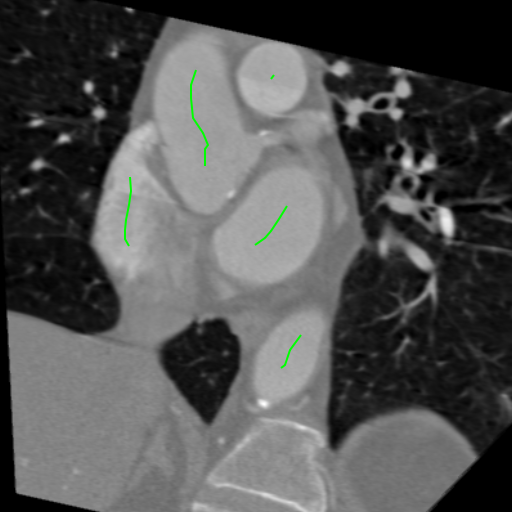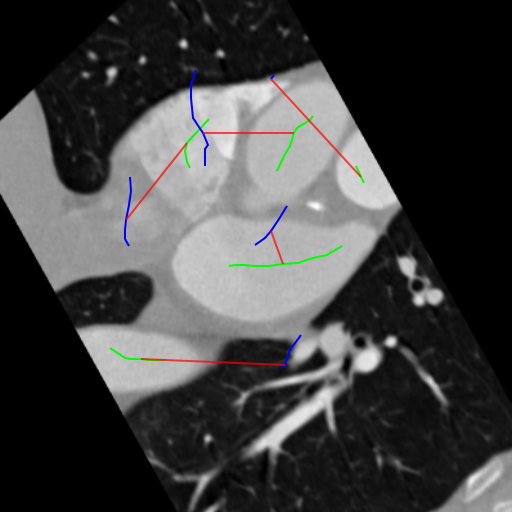

The Interdisciplinary Project (IDP) for my minor 'theoretical medical science' was about registration of coronary heart data.
The task was to find a fast algorithm to registrate CT datasets for marking known areas (e. g. the heart chambers, atriums, etc.). The registration was assumed to work with affine matrices, transforming a reference CT dataset to match the given one.
To speed up the matching, the dataset was reduced using sphere growing (combined with FFT), particle emission and finally a built up graph, representing the blood streams of the CT dataset.
Finally I managed to develop a system which runs 23 seconds in average for each registration process based on a reference CT dataset. The algorithm is able to detect 61% of the existing structures using affine transformations and distance based registration only! For the remaining 39% of so far undetected significant areas, at least the alignment for the registration was improved. It should be noted, that it is not possible to perform a perfect registration using one reference dataset.
More information is available of the website of this Interdisciplinary Project.

